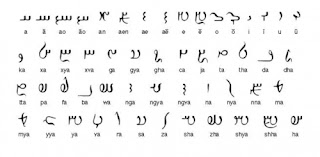by le mag, Euronews
A black, mordant, sarcastic sense of humour is part of the Iranian psyche, and as war once again stalks the length and breadth of the Muslim world, one of Iran’s most famous playwrights Mohammad Charmshir and director Reza Haddad have been pulling in the crowds in Tehran with “Funny nightmares by day and some by night”, their fourth success in a row.
It is a resolutely futuristic theatre – performance art hybrid which has blossomed throughout August and September 2013 in a theatre hall in the heart of the Iranian capital.
Seven actresses have been cast to depict the nightmare of war and all its catastrophes, with extravagant costumes, dance, and music that at turns beguiles and throbs like artillery fire.
“We are living in a world which has lots of anxiety about war. We are all worried about having another war in our country and it is horrible for us. We live in a world in which dictators have encouraged resentment, it is a nightmare that doesn’t leave us. In this performance I tried to show these fears and nightmares. I try also to talk about them to the audience. In this world, not just in my homeland but, I think, around the world the big fear and anxiety is war. War and ruin. War in which children are the first victims. These are my concerns in this performance,” says Haddad.
Over the past three decades most Iranians have endured the pressures of revolution, war, politics and isolation. Even a small new coda in such a relentless symphony can influence Iranians’ daily lives, so this is probably the main reason why many Iranian artists choose political and social content for their works of art. “ Funny Nightmares” is one such example.
A black, mordant, sarcastic sense of humour is part of the Iranian psyche, and as war once again stalks the length and breadth of the Muslim world, one of Iran’s most famous playwrights Mohammad Charmshir and director Reza Haddad have been pulling in the crowds in Tehran with “Funny nightmares by day and some by night”, their fourth success in a row.
It is a resolutely futuristic theatre – performance art hybrid which has blossomed throughout August and September 2013 in a theatre hall in the heart of the Iranian capital.
Seven actresses have been cast to depict the nightmare of war and all its catastrophes, with extravagant costumes, dance, and music that at turns beguiles and throbs like artillery fire.
“We are living in a world which has lots of anxiety about war. We are all worried about having another war in our country and it is horrible for us. We live in a world in which dictators have encouraged resentment, it is a nightmare that doesn’t leave us. In this performance I tried to show these fears and nightmares. I try also to talk about them to the audience. In this world, not just in my homeland but, I think, around the world the big fear and anxiety is war. War and ruin. War in which children are the first victims. These are my concerns in this performance,” says Haddad.
Over the past three decades most Iranians have endured the pressures of revolution, war, politics and isolation. Even a small new coda in such a relentless symphony can influence Iranians’ daily lives, so this is probably the main reason why many Iranian artists choose political and social content for their works of art. “ Funny Nightmares” is one such example.





.jpg)
